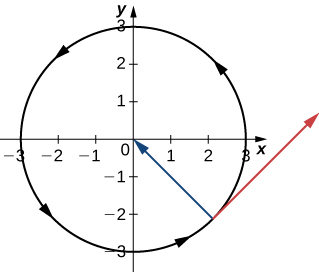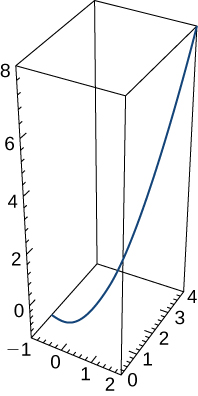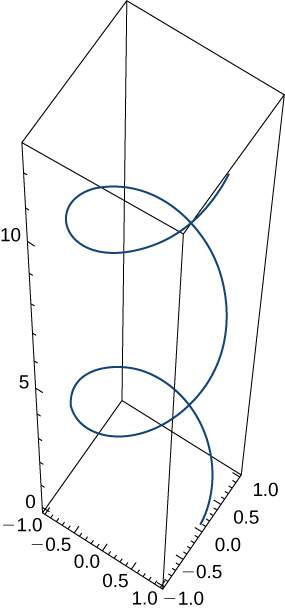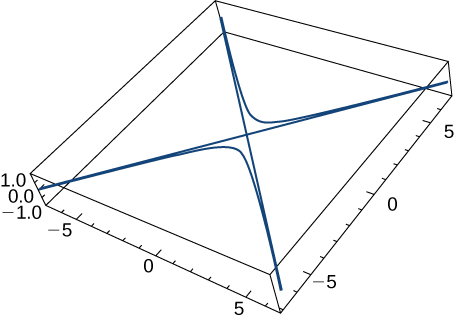| << Chapter < Page | Chapter >> Page > |
A particle moves on a circular path of radius b according to the function where is the angular velocity,

Find the velocity function and show that is always orthogonal to
To show orthogonality, note that
Show that the speed of the particle is proportional to the angular velocity.
Find the antiderivative of that satisfies the initial condition
An object starts from rest at point and moves with an acceleration of where is measured in feet per second per second. Find the location of the object after sec.
Show that if the speed of a particle traveling along a curve represented by a vector-valued function is constant, then the velocity function is always perpendicular to the acceleration function.
The last statement implies that the velocity and acceleration are perpendicular or orthogonal.
Given and find
Find the velocity vector for the function
Describe and sketch the curve represented by the vector-valued function
Locate the highest point on the curve and give the value of the function at this point.
at
The position vector for a particle is The graph is shown here:

Find the velocity vector at any time.
Find the acceleration at time sec.
A particle travels along the path of a helix with the equation See the graph presented here:

Find the following:
Speed of the particle at any time
Find the unit tangent vector for the helix.
A particle travels along the path of an ellipse with the equation Find the following:
Speed of the particle at
Given the vector-valued function (graph is shown here), find the following:

Acceleration
Find the minimum speed of a particle traveling along the curve
2
Given and find the following:
Now, use the product rule for the derivative of the cross product of two vectors and show this result is the same as the answer for the preceding problem.
Find the unit tangent vector T (t) for the following vector-valued functions.
Evaluate the following integrals:

Notification Switch
Would you like to follow the 'Calculus volume 3' conversation and receive update notifications?